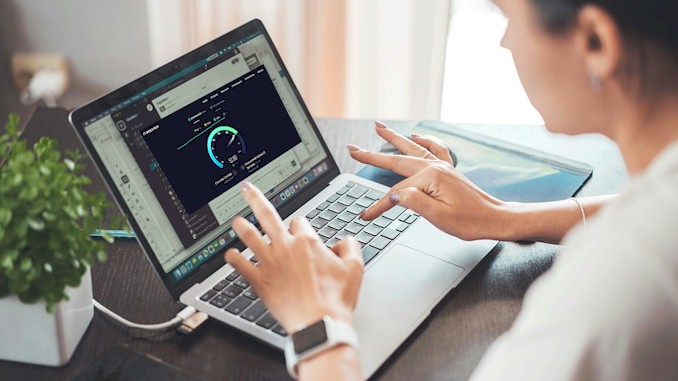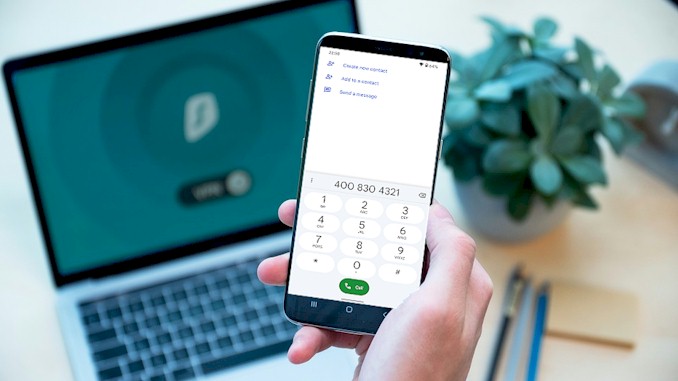The Top 10 VPN Connection Tips You Need to Know
In today’s digital age, many individuals have adopted the use of Virtual Private Networks (VPNs) to protect their online privacy and security. However, the downside of using a VPN is that it can impact the performance of your device, as it requires CPU power to encrypt and decrypt data. Fortunately, there are ways to optimize your VPN settings to minimize this impact, allowing you to work and play online without any hindrances. As a seasoned VPN user of over a decade, I have encountered numerous instances where I’ve had to troubleshoot how to maintain a fast internet connection while using a VPN, especially when streaming my favorite TV shows while on the go. In this article, I’ll be sharing my tips and tricks with you, so you too can enjoy seamless online experiences without compromising on speed or security. I hope you find this guide helpful!
1. Change your VPN server location or Connect to a server that isn’t overloaded
This is exactly what I did first when I experienced a slow speed with a VPN. So, if you’re experiencing slow VPN speeds, try connecting to another server that’s closer or has better performance to improve your online experience.
When you’re experiencing slow internet speeds while using a VPN, it may be due to a variety of factors, such as the distance between your device and the VPN server, network congestion, or the server’s processing power. In such cases, connecting to another VPN server that’s available can help improve your connection speed.
Each VPN provider has a network of servers located in different regions, and some servers may be more congested or farther away from your location than others. By connecting to a server that’s closer to your physical location, you can reduce the distance between your device and the server, which can result in faster internet speeds.
To connect to another VPN server, you can usually do so from the VPN provider’s app or settings page. Look for the option to select a different server or location and choose one that’s closer to you or has better performance metrics. If there is no indication of the performance metrics of servers, you have to go through a try-and-true process to find the one that fits your need.
2. Change the protocol settings of the VPN
Changing the protocol settings of a VPN can sometimes improve speed by optimizing the way the VPN encrypts and routes your internet traffic. A protocol is a set of rules and procedures that govern the transmission of data between devices, and VPNs use different protocols to provide secure and private internet connections.
Some VPN protocols may be slower than others, depending on various factors such as the strength of encryption used, the type of data being transmitted, and the network conditions. By switching to a faster protocol, you can potentially improve your VPN’s speed and reduce latency.
Here are some common VPN protocols and their speed characteristics:
- WireGuard: This is an open-source protocol that uses modern cryptography and is designed to be lightweight and efficient, with fewer lines of code than traditional VPN protocols like OpenVPN. WireGuard is known for its fast connection speeds, low latency, and strong security features, making it an attractive option for users who prioritize speed and privacy.
- Lightway: This is a proprietary VPN protocol developed by ExpressVPN, which is also designed to offer fast and secure connections. Lightway is optimized for mobile devices and uses fewer system resources than traditional VPN protocols, making it ideal for users who need a VPN that doesn’t drain their battery or slow down their device. Lightway also uses modern cryptography and is designed to be resilient to network disruptions and latency issues.
- OpenVPN: This is a popular open-source protocol that offers high security and flexibility, but may be slower due to its strong encryption and overhead.
- IKEv2/IPSec: This protocol is known for its speed and stability, making it ideal for mobile devices and unstable networks. It uses a combination of encryption and security protocols to provide fast and secure connections.
- L2TP/IPSec: This protocol combines the speed of L2TP (Layer 2 Tunneling Protocol) with the security of IPSec (Internet Protocol Security) to offer a balance of speed and security.
To change your VPN protocol settings, you’ll need to access your VPN’s app or settings page and look for the protocol options. Depending on the provider, you may have the option to choose from various protocols or customize the settings based on your preferences. Keep in mind that changing the protocol settings may affect the level of security and privacy provided by your VPN, so make sure to choose a protocol that meets your needs.
3. Switch between TCP/UDP with OpenVPN
Switching between TCP and UDP with OpenVPN may improve speed by optimizing the protocol for the specific network conditions and data being transmitted. Consider using UDP for faster, real-time applications and TCP for more reliable, data-intensive tasks. Access the protocol settings in your VPN’s app or settings page to switch between TCP and UDP.
TCP (Transmission Control Protocol) and UDP (User Datagram Protocol) are two different communication protocols used by OpenVPN to transmit data. TCP is a reliable, connection-oriented protocol that ensures all data packets are received in the correct order, while UDP is a faster, connectionless protocol that may drop packets but offers lower latency.
When using OpenVPN, switching between TCP and UDP can potentially improve speed by optimizing the protocol for the specific network conditions and data being transmitted. In general, UDP is faster and more efficient for streaming media and other real-time applications, while TCP is more reliable and better for file transfers and other data-intensive tasks.
To switch between TCP and UDP with OpenVPN, you’ll need to access your VPN’s app or settings page and look for the protocol options. Depending on the provider, you may have the option to choose between TCP and UDP or customize the settings based on your preferences. Remember that altering the protocol settings may influence the level of security and privacy provided by your VPN, so select a protocol that matches your requirements.
4. Enable split tunneling if available
Enabling split tunneling can potentially help improve the speed and performance of your VPN by reducing the load on the VPN and allowing you to select which applications or services should use the VPN connection. Check if your VPN provider offers this feature and access the settings to customize which traffic should use the VPN connection.
Enabling split tunneling is helpful, especially if you only need to use the VPN for certain applications or services.
Split tunneling is a feature that allows you to select which applications or services should use the VPN connection, while other applications or services use your regular internet connection. By doing this, you can reduce the load on the VPN and improve the overall speed and performance of your device.
For example, if you only need to use the VPN to access certain websites or services that are blocked in your location, you can enable split tunneling to only route traffic for those websites or services through the VPN, while allowing other traffic to use your regular internet connection.
To enable split tunneling, you’ll need to check if your VPN provider offers this feature and how to access it. Some VPN providers may have split tunneling enabled by default, while others may require you to manually enable it in the settings or options menu of the VPN app.
Once you have access to the split tunneling settings, you can choose which applications or services should use the VPN connection and which should use your regular internet connection. Keep in mind that enabling split tunneling may reduce the level of security and privacy provided by your VPN, as not all traffic will be encrypted and protected by the VPN.
5. Turn on MultiHop to have a try
It’s not typically expected for MultiHop to improve the speed of a VPN connection as it can introduce additional latency and processing time. However, in some cases, using MultiHop may improve the connection speed depending on the network infrastructure between the VPN servers.
When using MultiHop, your internet traffic is routed through multiple VPN servers instead of just one. This means that your data is encrypted and decrypted multiple times, which can increase the processing time and introduce additional latency. As a result, using MultiHop can potentially slow down your internet speed.
However, depending on the network infrastructure between the VPN servers, using MultiHop may actually improve the connection speed. If the network connection between the first MultiHop server and the second server is faster or more stable than the connection between your device and the first server, then using MultiHop could improve the overall speed and performance of the VPN connection.
If your VPN provider supports MultiHop, also known as Double VPN, you can enable this feature and test if it improves your connection speed. However, keep in mind that the performance may vary depending on the network infrastructure and other factors such as server location and server load.
6. Switching from a wireless connection to a wired Ethernet connection
Switching from a wireless connection to a wired Ethernet connection can potentially improve the speed of your VPN connection, but this depends on your specific circumstances. If you’re able to switch to a wired connection, you can use an Ethernet cable to connect your device to a modem or router.
Wireless connections can be less stable and have more interference than wired connections, which can result in slower internet speeds. Additionally, using a VPN on a wireless network can further decrease the speed of your connection due to the additional processing required to encrypt and decrypt data.
To improve the speed of your VPN connection by ditching wireless connections, you can switch to a wired Ethernet connection. This will provide a more stable and consistent connection, which can help to improve the speed and performance of your VPN connection.
To connect to a wired Ethernet connection, you’ll need to use an Ethernet cable to connect your device to a modem or router. If you’re using a laptop, you may need an Ethernet adapter if your device doesn’t have an Ethernet port.
7. Turn off security software
In some cases, security software can interfere with VPN connections and cause slower speeds. This is because security software can monitor and analyze network traffic, which can add additional processing time and latency. Additionally, some security software may block VPN connections or restrict access to certain VPN servers.
You can try to turn it off and then compare the speed of different situations to see whether this approach works.
8. Restart your device
Restarting your device can sometimes be helpful for improving the speed of a VPN connection. This is because restarting can clear out any temporary issues or glitches that may be affecting your device or network connection.
When you restart your device, it closes any open applications or processes and resets your device’s network settings. This can help to clear out any temporary issues that may be causing slower speeds or connection issues with your VPN.
Additionally, restarting your device can also help to free up resources and memory that may be used by other applications or processes running in the background. This can help to ensure that your device has sufficient resources available to run your VPN connection smoothly and efficiently.
9. Restart your router
Restarting your router can sometimes be helpful for improving the speed of a VPN connection. This is because routers can sometimes encounter issues that can affect their performance, such as network congestion or conflicting settings.
When you restart your router, it resets its network settings and clears out any temporary issues that may be affecting its performance. This can help to improve the speed and stability of your VPN connection.
To restart your router, follow these steps:
- Locate the power cord for your router and unplug it from the electrical outlet or power strip.
- Wait for at least 30 seconds to a minute to ensure that the router’s memory and temporary files are cleared.
- Plug the power cord back into the electrical outlet or power strip.
- Wait for your router to finish booting up and reconnecting to your network.
Once your router has restarted, try connecting to your VPN again and see if it has improved the speed and stability of your connection.
10. Try Using a Different VPN Service
Sometimes, despite trying various troubleshooting steps, you may still not be able to achieve the desired speed or access a specific geographic location with your VPN service. In such cases, trying a different VPN service as a last resort may be necessary to achieve your goal.
Having a backup VPN service, can be useful in situations where a VPN server is overloaded or experiencing issues due to high traffic volume. By switching to another VPN service, you may be able to find a server that is less congested and offers better performance.
At the time, the only way to enjoy your favorite TV shows while traveling is by using a different VPN. I actually ran into this kind of situation many times when I went through all the tricks that had worked before without any luck. That’s very rare but not impossible, especially if you need a specific geographic connection for the streaming service, such as the VPN nodes in Canada. It’s possible all servers in Canada of the VPN service run into some problems.
That’s why I always have two VPNs alone – one as the daily driver and another as a backup. Personally, I use both ExpressVPN and NordVPN.
There are times when a VPN server is overloaded due to a high volume of traffic. Having a backup VPN helps you get around these issues.






